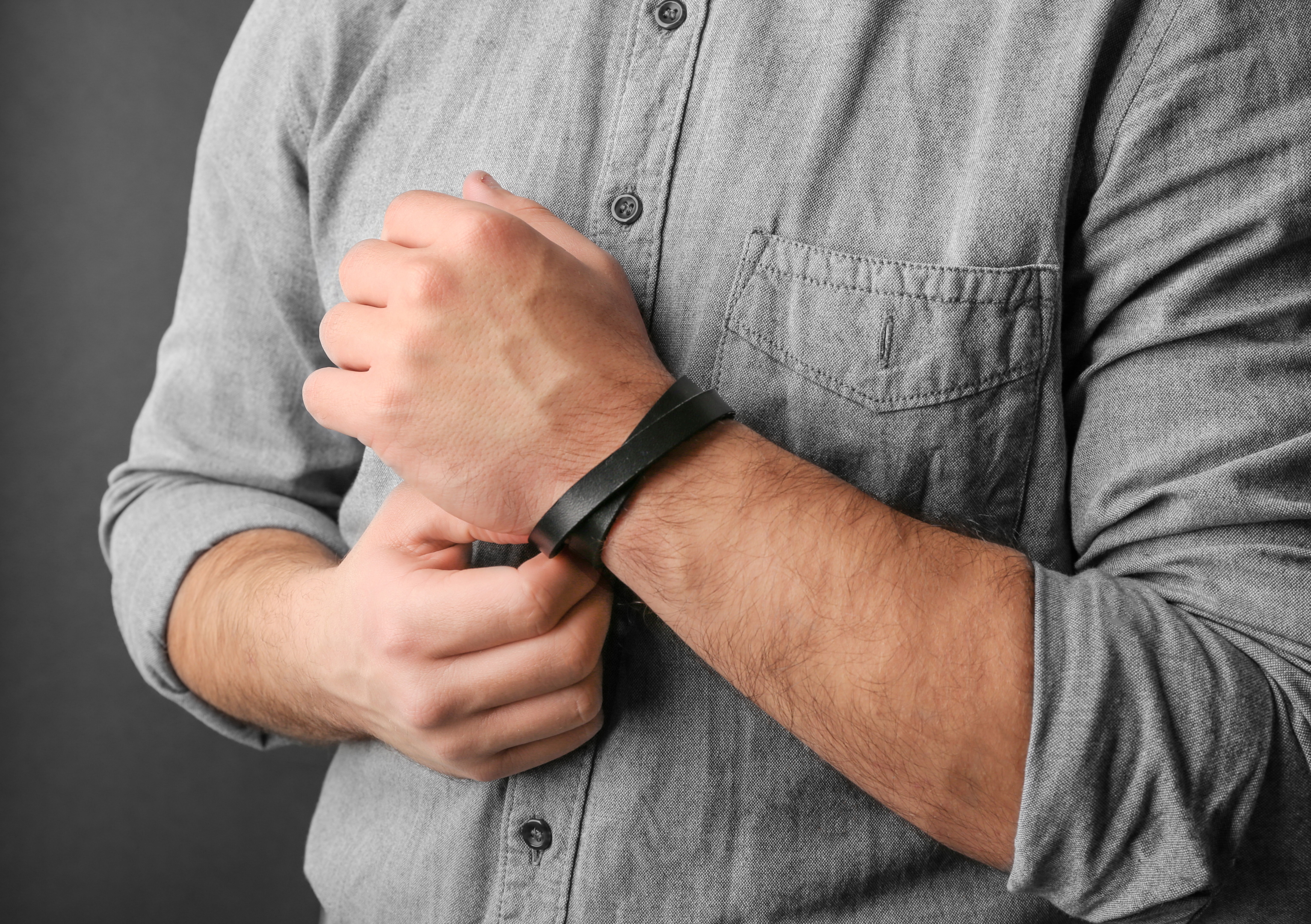The History of Silicone Wristbands A Journey Through Time
Silicone wristbands have become ubiquitous accessories that carry significant meaning, ranging from fashion statements to representations of various causes. What started as a simple promotional item has evolved into a powerful tool for communication, support, and identity. This article delves into the fascinating history of silicone wristbands, tracing their origins, cultural impact, and the many roles they play in today's world.

The Early Days: Birth of the Silicone Wristband
The concept of wristbands is not new; people have worn various types of bracelets for centuries. However, the modern silicone wristband as we know it today can trace its origins back to the early 2000s. Silicone, a versatile and durable material, became the preferred choice for wristbands due to its flexibility, resilience, and cost-effectiveness.
Livestrong: The Game-Changer
The pivotal moment in the history of silicone wristbands came in 2004 with the launch of the Livestrong campaign by the Lance Armstrong Foundation. The yellow Livestrong wristband became an iconic symbol in support of cancer survivors and research. Priced at just $1 each, the wristbands were accessible to the masses and quickly gained immense popularity, selling over 80 million units.
The success of the Livestrong campaign proved the potential of silicone wristbands as powerful fundraising and awareness tools. It also demonstrated how a simple accessory could unite people across the globe for a common cause, paving the way for other organisations to adopt similar strategies.
Evolution and Diversification
Following the success of the Livestrong wristbands, the market for silicone wristbands experienced exponential growth. Various organisations, charities, and businesses began to see the potential of these simple yet effective items as promotional tools, leading to a diversification in their use.
Cause and Awareness Wristbands
Inspired by Livestrong, numerous non-profit organisations and advocacy groups began to use silicone wristbands to promote their causes. Different colours and imprints started to signify various issues, from pink for breast cancer awareness to red for HIV/AIDS awareness. These wristbands became a way for individuals to show their support and solidarity for different movements.
Commercial and Promotional Use
Silicone wristbands also found their way into the commercial sector. Companies began using them for brand promotion, customer loyalty programmes, and event giveaways. Customisable with logos, slogans, and contact information, these wristbands became valuable marketing tools. They were particularly popular at trade shows, conferences, and other events where visibility and brand recognition were paramount.
Custom Silicone Wristbands
Silicone wristbands, often referred to as silicone bracelets or rubber wristbands, have evolved from simple accessories into powerful tools for raising awareness. Made from durable silicone rubber, these wristbands are not only robust but also versatile in their design. One of the most notable examples is the bright yellow wristbands popularised by the "Livestrong" campaign, which aimed to raise awareness and funds for cancer research.
Rubber bracelets, particularly custom silicone wristbands, became a major trend in the early 2000s. Their popularity soared due to their use in various campaigns and causes, such as the "Make Poverty History" campaign. These wristbands, available in a myriad of colours and designs, serve much more than aesthetic purposes; they act as powerful symbols of solidarity and support for various issues. Additionally, silicone bands can be customised with messages, logos, and even glow-in-the-dark features, making them perfect for both advocacy and promotional events.
The versatility of silicone wristbands extends beyond awareness campaigns; they have also become a popular fashion accessory. From printed wristbands showcasing intricate designs to the simplicity of Tyvek wristbands used for event admission, the range is extensive. Silicone wristbands, in particular, remain a favourite due to their comfort, durability, and the ability to personalise each piece to convey specific messages and themes.
The Cultural Impact
Silicone wristbands have transcended their original purpose and integrated themselves into popular culture. They have become more than just accessories; they are now symbols of identity, belonging, and personal values.
Fashion Statements
Initially seen as mere promotional items, silicone wristbands have evolved into fashion accessories. With countless colours, designs, and customisation options available, people began to wear wristbands to express their personal style. Celebrities and influencers started endorsing them, adding to their appeal and trendiness.
Social Movements
In addition to promoting awareness for various causes, silicone wristbands have also become symbols of social movements. For instance, during times of political unrest or social change, wristbands bearing messages of unity, resistance, or solidarity have been widely worn. They serve as silent yet powerful tools for expressing one's stance on important issues.
Community and Belonging
Event organisers have recognised the potential of silicone wristbands to foster a sense of community among attendees. Music festivals, sports events, and charity runs often provide wristbands as part of their entry packages. These wristbands not only serve as memorabilia but also help create a shared identity among participants.
Technological Advancements
As technology has advanced, so too have silicone wristbands. The basic design has remained largely unchanged, but modern wristbands now incorporate a variety of features that enhance their functionality and appeal.
QR Codes and NFC Chips
One of the significant advancements in silicone wristbands is the integration of QR codes and Near Field Communication (NFC) chips. These technologies allow wristbands to store and transmit digital information, making them useful for access control, contactless payments, and sharing contact information. For event organisers, this means streamlined check-ins and enhanced attendee engagement.
Biometric Monitoring
In the realm of health and fitness, silicone wristbands have taken on a new role with the advent of biometric monitoring. Fitness trackers and smartwatches, often made from silicone, can monitor heart rate, sleep patterns, and physical activity. These devices have become essential tools for health-conscious individuals, merging the worlds of technology and wellness.
Sustainability and Ethical Considerations
As silicone wristbands continue to grow in popularity, sustainability and ethical considerations have come to the forefront. The production and disposal of silicone products have environmental implications that cannot be ignored.
Eco-Friendly Alternatives
In response to growing environmental concerns, some manufacturers have started producing eco-friendly silicone wristbands. These wristbands are made from biodegradable or recycled materials, reducing their environmental impact. Additionally, companies are exploring ways to make the production process more sustainable, such as using renewable energy sources and reducing waste.
Ethical Production
Ethical considerations also extend to the labour practices involved in the production of silicone wristbands. Companies need to ensure fair wages and safe working conditions for factory workers. Consumers are increasingly demanding transparency and accountability from brands, making ethical production a critical aspect of the wristband industry.
The Future of Silicone Wristbands
Looking ahead, the future of silicone wristbands appears promising. As new technologies emerge and societal trends evolve, wristbands will likely continue to adapt and find new applications.
Innovations on the Horizon
Advancements in materials science may lead to the development of even more versatile and sustainable wristbands. For example, research into smart materials could result in wristbands that change colour based on environmental conditions or user interaction.
Expanded Applications
The integration of wristbands with digital platforms and services will likely expand their applications further. From personalised marketing experiences to enhanced security features, the potential uses of silicone wristbands are vast and varied.
Continued Cultural Significance
Silicone wristbands will likely retain their cultural significance as symbols of support, identity, and belonging. As long as there are causes to champion and communities to build, these simple yet powerful accessories will continue to play a crucial role.
Conclusion
The history of silicone wristbands is a testament to the power of simple ideas executed brilliantly. From their humble beginnings as promotional items to their widespread use in fundraising, fashion, and technology, silicone wristbands have become an integral part of modern culture. For event organisers and gift-givers alike, they offer a unique blend of functionality, affordability, and emotional resonance.
As we move forward, the evolution of silicone wristbands will undoubtedly continue, driven by technological innovations and a growing awareness of sustainability and ethics. Whether used to support a cause, promote a brand, or simply make a fashion statement, silicone wristbands remain a versatile and impactful accessory with a rich history and a bright future.


Leave a comment